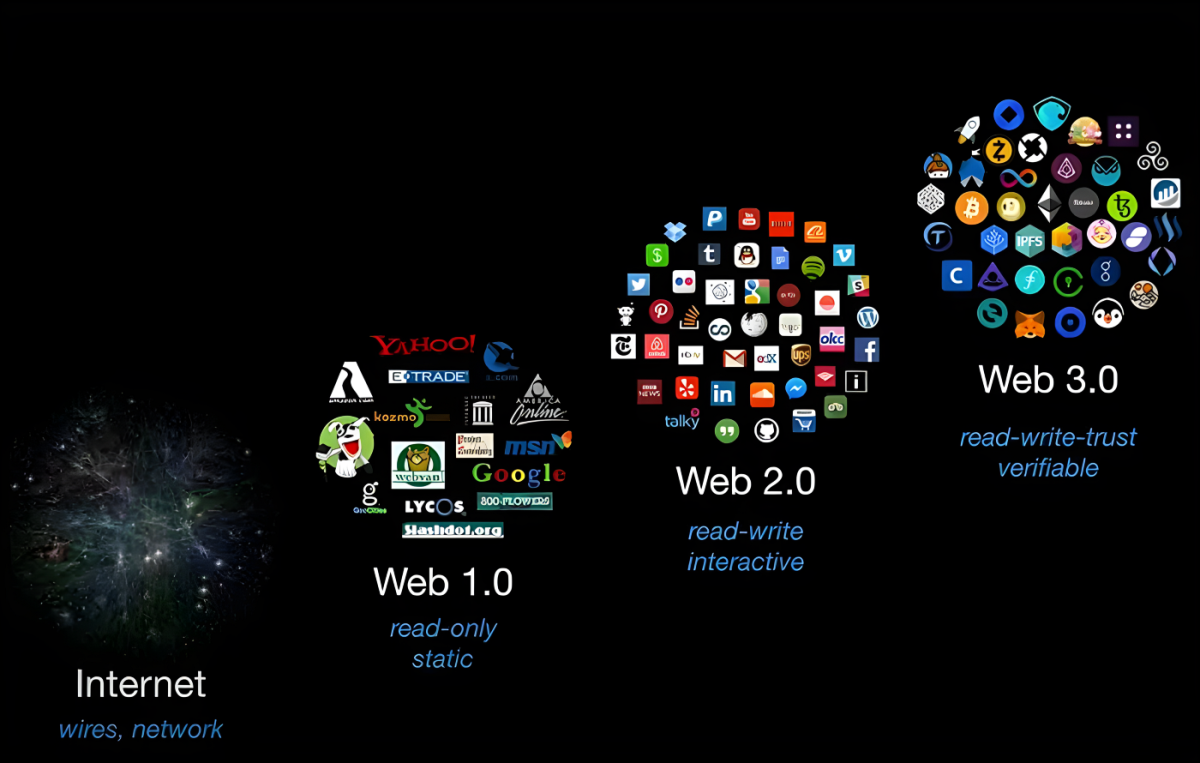Article by Dr. Oluseyi Akindeinde, CTO Digital Encode Limited (You may wish to start reading from Part I)
The internet is changing, and Web3 is the reason why. In this article, we’ll explore what Web3 is, how it differs from the current state of the internet (Web2), and why it’s the future of the internet. We’ll also dive into the advantages of Web3 in the areas of identity, security, and privacy.

What is Web3?
Web3 is the third generation of the internet. The first generation (Web1) was the internet of static pages and information. The second generation (Web2) brought us the interactive web, social media, and e-commerce. Web3 is the next iteration, and it’s all about decentralization.
Web3 is a decentralized web, built on blockchain technology. If you’re not familiar with blockchain, it’s a distributed ledger that records transactions in a secure and transparent way. Blockchain allows for a network of computers to verify and approve transactions without the need for a central authority.
The decentralized nature of Web3 means that there’s no single point of control. In Web2, big companies like Facebook, Google, and Amazon control much of the internet. Web3, on the other hand, is built on the principle of decentralization, giving power back to the users.
Identity in Web3
In Web2, your digital identity is often tied to your real-world identity. Your name, address, phone number, and email are all used to create a digital profile of you.
This information is then sold to advertisers and other companies for targeted marketing and other purposes.
Web3, on the other hand, is built on the idea of self-sovereign identity. This means that you control your own digital identity. You create a digital identity that is not tied to your personal information. This identity is verified through blockchain technology, making it more secure and less susceptible to hacking.
To better understand self-sovereign identity, think of it as a digital passport. Just like your physical passport, your digital passport contains your identity information. However, unlike your physical passport, your digital passport is completely under your control. You decide who can access your information, and you can revoke access at any time.
Security in Web3
Security is a big concern in the digital age. In Web2, data breaches are all too common. Big companies like Equifax, Yahoo, and Marriott have all experienced significant data breaches in recent years. These breaches have exposed the personal information of millions of users, putting their identity and privacy at risk.
Web3, on the other hand, is built on the principle of security. Transactions are verified through blockchain technology, making them more secure and less susceptible to hacking.
Because there’s no central point of control, it’s much harder for hackers to gain access to your data.
Think of Web3 as a digital safe. In Web2, your data is stored in a digital vault controlled by big companies. In Web3, you store your data in your own digital safe. You control the key to the safe, and only you can access your data. It’s much harder for hackers to break into your safe, making your data more secure.
Privacy in Web3
Privacy is a fundamental right in the digital age. In Web2, your personal information is collected and monetized without your consent. Companies use your data for targeted advertising and other purposes, often without your knowledge.
Web3, on the other hand, is built on the principle of privacy. Transactions are verified through blockchain technology, which is designed to be transparent and secure. This means that your data is not collected by a central authority, and it’s not sold to third-party companies without your consent.
Think of Web3 as a private island. In Web2, you’re surrounded by a sea of data that’s constantly being collected and monetized by big companies. In Web3, you’re on your own private island, surrounded by a moat that keeps your data safe and secure. You control who can access your data, and you can revoke access at any time.
Why is Web3 the Future of the Internet?
Web3 is the future of the internet because it offers a more secure, private, and decentralized web. It puts control back in the hands of the users, rather than big companies. Here are a few reasons why Web3 is the future of the internet:
Decentralization: Web3 is built on the principle of decentralization. There’s no central point of control, which means that the web is more resilient and less susceptible to hacking.
Self-sovereign Identity: With Web3, you control your own digital identity. This makes your identity more secure and less susceptible to identity theft.
Security: Transactions in Web3 are verified through blockchain technology, making them more secure and less susceptible to hacking.
Privacy: Web 3 is built on the principle of privacy.
Your data is not collected by a central authority, and it’s not sold to third-party companies without your consent.
Transparency: Blockchain technology is designed to be transparent. This means that transactions are recorded in a public ledger, making the web more transparent and accountable.
Conclusion
Web3 is the future of the internet. It’s a decentralized web that puts control back in the hands of the users. It’s more secure, more private, and more transparent than the current state of the internet (Web2). With Web 3, you control your own digital identity, and your data is stored in a digital safe that only you can access. The future of the internet is here, and it’s called Web 3.






